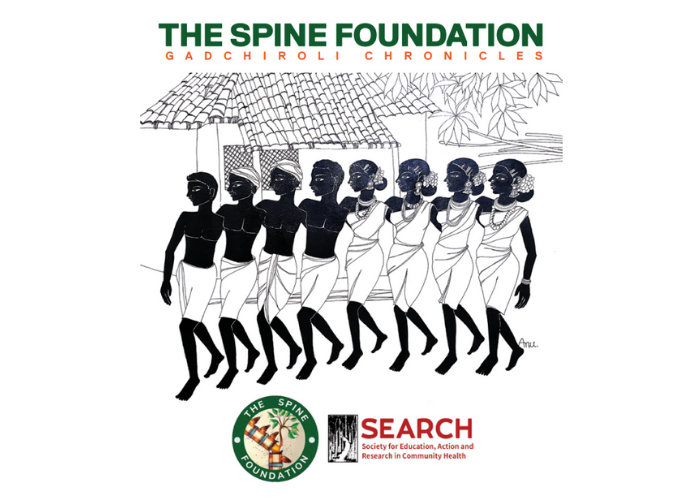Best Practices for Lifting and Carrying in Manual Labour

Manual labour forms the backbone of many industries in India — from agriculture and construction to factory work and delivery services. Every day, millions of workers lift and carry heavy loads, sometimes repeatedly over long shifts. While the work may seem routine, improper lifting and carrying techniques can cause serious damage to the body, particularly the spine.
Back pain is already one of the leading causes of work-related disability worldwide, and in India, the problem is amplified by the high proportion of the workforce involved in physically demanding jobs. For rural workers, tasks like carrying sacks of grain, buckets of water, or bundles of firewood are often done without access to proper equipment. In urban settings, construction workers, warehouse handlers, and delivery personnel face similar risks but with different work environments.
In this article, we explore the best practices for lifting and carrying in manual labour, backed by medical facts, occupational safety guidelines, and context relevant to both rural and urban India.
Why Safe Lifting Matters
The spine is an incredibly strong yet delicate structure. It’s made up of vertebrae cushioned by discs that act like shock absorbers. When you lift an object improperly, especially if it’s heavy, the stress on your spine increases dramatically. This can cause injuries such as:
- Muscle strains — overstretching or tearing of muscle fibres
- Ligament sprains — damage to the connective tissues stabilising joints
- Herniated discs — when the soft inner core of a disc bulges out through a tear, pressing on nearby nerves
- Chronic back pain — recurring discomfort that can last months or years
According to the World Health Organization (WHO), musculoskeletal disorders are among the most common work-related health problems globally, and improper lifting is a major contributor.
Safe lifting isn’t just about preventing injuries today — it’s about preserving long-term mobility and quality of life. A single wrong movement can cause an injury that affects someone’s ability to work for months, which in turn impacts their family’s livelihood.
The Indian Scenario
Rural Work Environments
In rural India, manual labour often involves carrying loads on the head, back, or shoulders over long distances. Examples include:
- Carrying water from wells or hand pumps
- Transporting harvested crops in sacks
- Moving firewood, fodder, or construction materials for local building work
The lack of mechanical aids means workers rely entirely on their bodies. Traditional methods, like head-loading, may seem efficient but place enormous strain on the neck and spine.
Urban Work Environments
In cities, manual labour includes tasks such as:
- Loading and unloading goods in warehouses
- Lifting construction materials like cement bags and steel rods
- Delivering heavy packages and appliances
- Handling bulky stock in retail and logistics
Urban workers may have access to trolleys, forklifts, or conveyors, but these are not always available, especially in smaller businesses or informal work setups.
The Numbers
- National Institute of Occupational Health (NIOH) reports that more than 60% of Indian manual labourers experience back pain at some point in their working lives.
- Agricultural workers in India often carry 20–50 kg loads, exceeding international safe lifting recommendations.
- The International Labour Organization (ILO) highlights that occupational safety training is minimal in the informal sector, which covers the majority of Indian labour jobs.

Medical Facts About Lifting Injuries
From a medical perspective, lifting injuries happen when forces on the spine exceed its tolerance level. Three key factors increase injury risk:
- Load weight — heavier objects increase spinal compression.
- Posture — bending at the waist rather than the knees multiplies stress on the lower back.
- Repetition — repeated lifts without rest cause cumulative strain.
Immediate effects of improper lifting can include muscle fatigue, sudden sharp pain, or reduced mobility.
Long-term effects may involve degenerative disc disease, spinal stenosis, or chronic muscle imbalances.
The Indian Orthopaedic Association recommends workplace-specific training for all manual workers, emphasizing safe lifting mechanics as a preventive measure.
Best Practices for Lifting
1. Warm Up Before Lifting
Just as athletes prepare before exercise, manual workers should warm up before lifting heavy loads. Light stretching and mobility exercises for the back, hips, and shoulders can prepare muscles and joints for strain.
2. Use the Right Posture
- Stand close to the load.
- Place feet shoulder-width apart for stability.
- Bend at the knees, not the waist.
- Keep your back straight and core muscles engaged.
- Lift smoothly without jerking.
3. Keep the Load Close
Holding the object close to your body reduces the lever effect on your spine, minimizing strain.
4. Avoid Twisting Movements
If you need to turn, move your feet instead of twisting your back while carrying the load.
5. Know Your Limits
Do not attempt to lift more than you can handle. Use team lifting or mechanical aids for heavier loads.
Best Practices for Carrying
1. Distribute Weight Evenly
If carrying two loads, balance them so that one side isn’t overloaded.
2. Use Mechanical Aids
Trolleys, wheelbarrows, and carts can reduce strain significantly. In rural areas, even simple bamboo poles with balanced loads can help.
3. Take Breaks
Carrying heavy loads continuously can cause fatigue and mistakes. Short rests help prevent injury.
4. Adjust Grip and Footwear
Wear sturdy shoes with good grip to prevent slips. Use gloves when carrying rough or sharp materials.
Ergonomics in Manual Labour
Ergonomics means designing tasks to fit the worker, not the other way around. In manual labour:
- Workplace setup: Place heavy materials at waist height to avoid bending.
- Load design: Use smaller bags or bundles to make lifting safer.
- Training: Teach proper lifting to new workers and refresh regularly.
In rural India, low-cost ergonomic solutions like community trolleys, raised platforms for loading, and redesigned load containers can make a big difference.
Gender-Specific Considerations
Women form a large part of the manual workforce, especially in agriculture, brick kilns, and small-scale manufacturing. Specific factors include:
- Pregnancy risks — heavy lifting can increase the chance of back injury and pregnancy complications.
- Nutritional factors — iron and calcium deficiencies weaken bones and muscles, increasing injury risk.
- Cultural workload — women often do household chores in addition to labour, increasing fatigue.
Workplace safety must account for these unique challenges, providing lighter load options and rest breaks.
Preventive Measures
- Regular Health Check-ups: Early detection of spine or joint issues can prevent long-term disability.
- Strengthening Exercises: Building core and back strength helps protect the spine.
- Awareness Campaigns: Employers, NGOs, and health bodies should conduct safety training.
The Spine Foundation has been at the forefront of addressing spinal health issues in India, especially in rural regions where medical resources are limited. The organisation conducts free health camps, spreading awareness about the dangers of improper lifting and demonstrating safer techniques. Through collaborations with local communities, they promote preventive care — encouraging workers to adopt posture-friendly practices, use makeshift aids, and avoid overloading. Their efforts not only reduce injury rates but also help sustain the livelihoods of those who depend on their physical strength to earn a living.
Conclusion
Safe lifting and carrying aren’t just about preventing pain today — they are an investment in long-term health and productivity. Whether in rural fields or urban warehouses, adopting correct techniques, using ergonomic tools, and listening to your body’s limits can mean the difference between a sustainable career and a life-long injury. By combining individual responsibility with community and organisational support, India can protect the backbone of its workforce — literally.







 Purulia (West Bengal): 27 Nov - 30 Nov 2025
Purulia (West Bengal): 27 Nov - 30 Nov 2025
 Bhachau (Gujarat): 04 Dec - 07 Dec 2025
Bhachau (Gujarat): 04 Dec - 07 Dec 2025
 Gadalur (Tamil Nadu) Feasibility Visit : 10 Dec - 11 Dec 2025
Gadalur (Tamil Nadu) Feasibility Visit : 10 Dec - 11 Dec 2025
 Kanpur (Uttar Pradesh) Feasibility Visit : 12 Dec - 14 Dec 2025
Kanpur (Uttar Pradesh) Feasibility Visit : 12 Dec - 14 Dec 2025
 Jalgaon (Maharashtra) : 11 Dec - 14 Dec 2025
Jalgaon (Maharashtra) : 11 Dec - 14 Dec 2025
 Silchar (Assam) : 18 Dec - 21 Dec 2025
Silchar (Assam) : 18 Dec - 21 Dec 2025
 Kankavli (Maharashtra) : 19 Dec - 21 Dec 2025
Kankavli (Maharashtra) : 19 Dec - 21 Dec 2025
